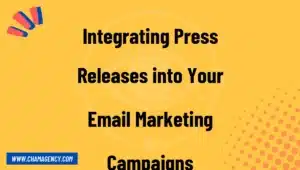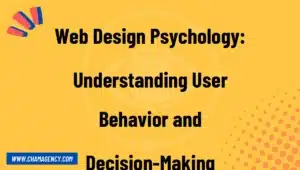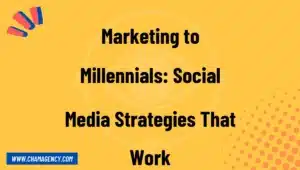The greatest issue for contemporary artists in the current world is being recognized. Many people paint beautiful images, but only a small percentage of them earn actual success and fame.
You must advertise yourself in order to become a well-known artist and begin selling paintings.
Traditional shows of young artists at galleries are still in doubt as a result of the epidemic, and only a small number of individuals interested in art attend them. Artists, on the other hand, have a lot of chances because to the Internet. Any artist may familiarize interested individuals with his or her works and begin selling paintings after devising a comprehensive advertising plan and using SEO strategies. So, today, we’ll look at how SEO might assist artists get exposure online.
Benefit of SEO for Artists
Many art websites, such as Gagosian, Artsy, Artsper, and others, now feature the top artists in respective fields. You must, without a doubt, be included there if you wish to become renowned. Furthermore, any artist who wishes to get more admirers and maybe an offer from a well-known gallery should use Pinterest, Instagram, and other social media platforms.
However, the fact is that the contemporary art market is quite competitive. If you really want to succeed and become more than just another local painter, but a renowned artist who makes a livelihood selling your paintings, you should not overlook the importance of establishing a website and advertising it.
The biggest benefit of having a website is that it focuses on your artwork, which, of course, helps you to generate more sales. Because you become one of many identities that everyone follows and lose your uniqueness, social media is an overcrowded marketplace for artists. By ranking first in Google search, you can show off your greatest work, provide people easy methods to contact you, and boost your online profile. You want as many people to know about you as possible, and you want them to be able to judge your work without having to compare it to the work of hundreds of other artists on nearby sites.
Despite the fact that many artists have websites, only a small percentage of them actively promote their work. The majority of websites remain half-empty and unvisited. Such artists are unnoticed and are unable to support themselves by selling their artwork. To become well-known and start receiving orders, you must first attract an art-loving audience. This is where search engine optimization (SEO) comes in. SEO is a method for getting your website to rank high in search results – at the top of the page for certain searches. If someone searches for your name or a phrase like “awesome paintings,” they may find your website and become a huge admirer of your work!
Here’s how search engine optimization may help artists:
Your website receives free traffic.
Your site is only seen by individuals who are really interested in art, thanks to appropriate keywords.
You raise brand recognition, which means more people will be aware of you.
Google has given your website a better ranking. According to a survey, sites on the first page of search results get more than 70% of all visitors. If someone is trying to purchase a painting and comes across your site on the SERP, they are more likely to visit you.
Gallery owners and agents will have a simpler time finding information about you and contacting you.
Tools for bettering an artist’s website’s SEO marketing
You’ll need this collection of essential tools and services to succeed, whether you’re working on your website on your own or have hired an SEO specialist:
- For website audits, keyword research, and competition research, use SE Ranking. SE Ranking is a flexible tool that may help you rank your site #1 even if you don’t have much knowledge with SEO. It examines your keywords (density, difficulty, and who ranks for them) and suggests comparable keywords to help you grow your semantic core. To boost website performance, all you have to do is follow the platform’s standards.
- ImageOptim is a program that optimizes images for Google. This free program optimizes photographs to make them load faster. It compresses files and eliminates unwanted data like as comments, embedded images, and information from cameras, among other things. The service is simple to use and supports all major picture formats.
- Grammarly is a tool that helps you optimize your text. On your website, everything you publish should be grammatically accurate and interesting. Grammarly scans your writings for grammatical errors as well as dull or confusing information. It also helps in maintaining the consistency, engagement, and tone of voice of your website material.
- Hootsuite is a social media management and marketing platform. Hootsuite is designed for seasoned digital marketers. They’ve developed a number of valuable social media management tools, including a set of bespoke social streams, the ability to identify social discussions (based on keywords, hashtags, and places), and a plethora of monitoring applications. The application linked around 35 social media channels in total, which is rather astounding!
In action: SEO for artists
So, let’s have a look at how SEO for artists works using real-life examples of artists that pay attention to SEO and rank well in the SERP. You may attain success by following these easy steps to reach the same result:
1. Choosing the right domain
The key is that the domain name is identical to the artist’s name. www.yourname.com is the finest choice. In this situation, even if your website has very little content, it will still rise in Google search results after a few months. Jordan Casteel, for example, has no content on his main page yet nevertheless ranks well due to the domain name matching his name.
2. Incorporating the artist’s name into the homepage snippet
It is made up of two parts: the title and the description. Your CMS will produce it automatically if you don’t define it explicitly. However, it will hurt your SEO if you don’t create your own relevant and catchy title and description that includes your name and who you are (artist).
Install the Yoast SEO plugin if you’re using WordPress. It will assist you in creating titles and meta descriptions, as well as determining whether or not they are SEO-friendly.
3. Using keywords that are related
You presumably want your site to be discovered not just by your name but also by other keywords, such as “top contemporary painters,” “art gallery,” “paintings for sale,” and so on, whether you’re an artist or manage an art gallery. To rank for these kind of inquiries, you must first create a semantic core. You may do this by using the services described below.
You may also make use of Google’s recommendations. Simply type your search term into the search box to discover what other people are searching for in your subject. These are, in reality, your keywords.
Distribute your keywords across the pages and create interesting content. While portfolio sites often have little text, optimized posts on your blog may generate a lot of organic traffic.
TIP: To gather the most relevant keywords, related searches, and long-tail keywords, use the SE Ranking keywords research tool. Also, don’t forget to update your keyword lists on a regular basis.
4. Improving the titles of photographs
Label both the picture file and the Alt-text in a meaningful manner to make your paintings visible in Google Images when someone googles your name. Takashi Murakami’s Celestial Flowers (2018) is a nice example of a good caption. This is true for whatever picture you post on Pinterest, your website, social media, or Wikipedia.
5. Increasing the speed with which a webpage loads
Many web portfolios have the challenge of including a large number of photographs. Large and heavy pictures slow down the loading speed of your site, which is one of the most important factors in ranking your site. Many artists, on the other hand, do not want to compress their pictures since the quality suffers. Here’s what you can do instead:
- Implement slow loading;
- remove EXIF data;
- utilize a CDN;
- take advantage of browser caching;
- define picture dimensions;
- limit redirects;
- and include a modest,
- cacheable favicon.
To test your site’s loading speed, use the Google PageSpeed Insights tool. It’s completely free and will provide you with a plethora of suggestions!
6. Creating a social media presence that is optimized
Google also gives Facebook, Twitter, and Instagram high rankings for names and brands. On your personal and company pages, include your complete name, specify your profession, and improve your picture and cover. The more social networks you utilize, the better – if you optimize all of your accounts in the same way, the SERP for your name will only include these sites (plus your website).
TIP: Managing several social media accounts might take a lot of time. Use the Hootsuite service in this scenario; it enables you to manage all of your social media accounts from one place.
7. Filling up the Google My Business form
If you own a gallery or an art class, fill up the Google My Business form with information about it. The major benefit is that it provides all of the information:
- Address;
- Contacts;
- Hours of operation;
- Categories;
- Short description;
- Add properties such as accessibility choices, Wi-Fi, and payment methods, among others;
- Make sure you’re the rightful owner.
8. Creating a Wikipedia page
It’s more of a PRO step, but it’s still quite effective. Having your own Wikipedia page enhances people’s and search engines’ confidence in you. The issue is that not everyone has access to create and modify Wikipedia articles, and unconfirmed or commercial content is deleted. As a result, here are some pointers for you:
- Engage the services of a Wikipedia contributor. First and foremost, you are not permitted to create a Wikipedia page on yourself. Second, a committed writer is aware with the platform’s unique standards.
- Gather information and create a draft based on it. Every information you give should be supported by credible sources such as other websites, statistics, magazine mentions, and so on. Examine the Wikipedia sites of other artists to see how they structure their entries. In general, a Wikipedia page about a single artist includes information on their early years and education, as well as prominent artworks, exhibits, and other activities.
- Give your manuscript to the hired writer, who will make any necessary modifications. The most important thing is to keep your essay as objective as possible – no advertising, just facts. Wait for your post to be published and add a great picture (don’t forget to optimize it for Google Images!).
Summary
Only a small percentage of artists make a livelihood by selling their work. This is partly due to the fact that few people are aware of these artists. They exclusively show their work in small galleries and hope for the best. However, if you focus on marketing and SEO, you may quickly establish yourself as one of the most well-known modern painters and begin selling your work. We hope that our suggestions will assist you in growing and succeeding with your website!








